- MacroVisor
- Posts
- The Weekend Edition # 114 - The Labor Market Dilemma
The Weekend Edition # 114 - The Labor Market Dilemma
Market Recap - Strong November; Macro: The Labor Market Dilemma; Calendars; Closing Thoughts - Keeping an eye on the data
Welcome to another issue of the Weekend Edition.
Thank you to all who’ve read and welcome to all the new subscribers this week!
Here’s what we cover:
Market Recap - Strong November
Macro - The Labor Market Dilemma
The Week Ahead - Economic & Earnings Calendars
Closing Thoughts - Keeping an eye on the data
Let’s dive in ⬇️
Market Recap - Nov 27 - Dec 1, 2023
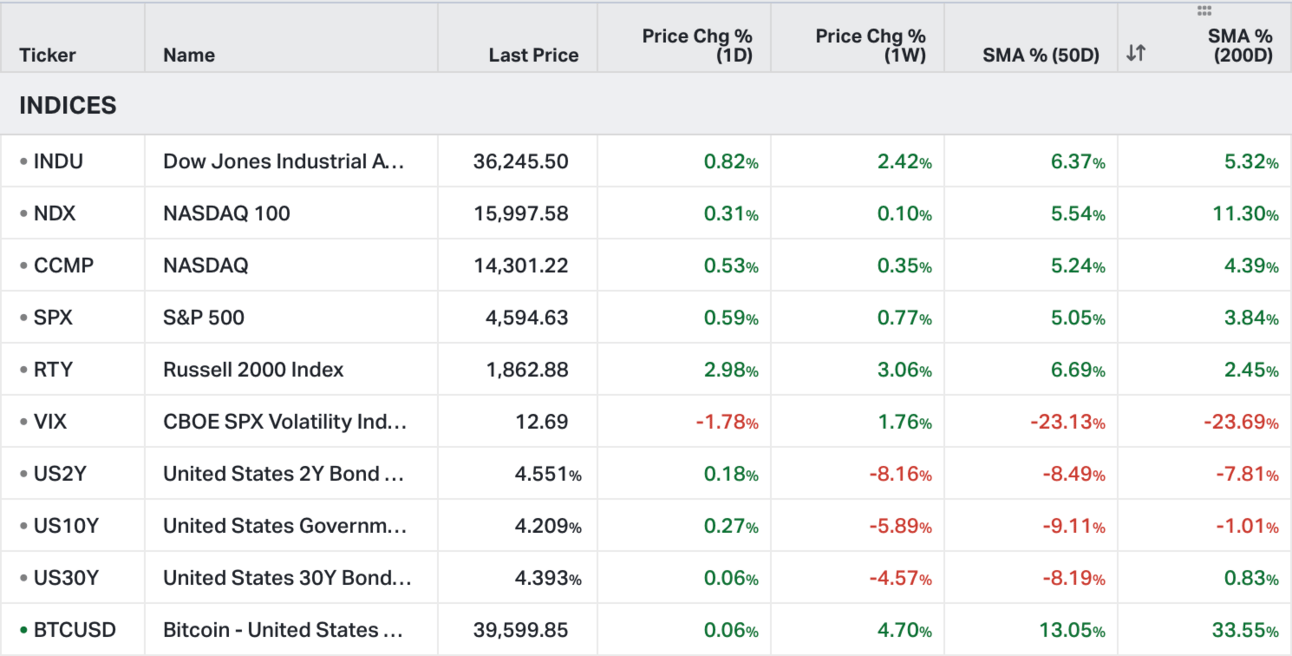
Source: Koyfin
The markets have had a fantastic November with the S&P 500 now up for five weeks in a row. And it’s not just the US markets, global indices have also had a relatively positive month.
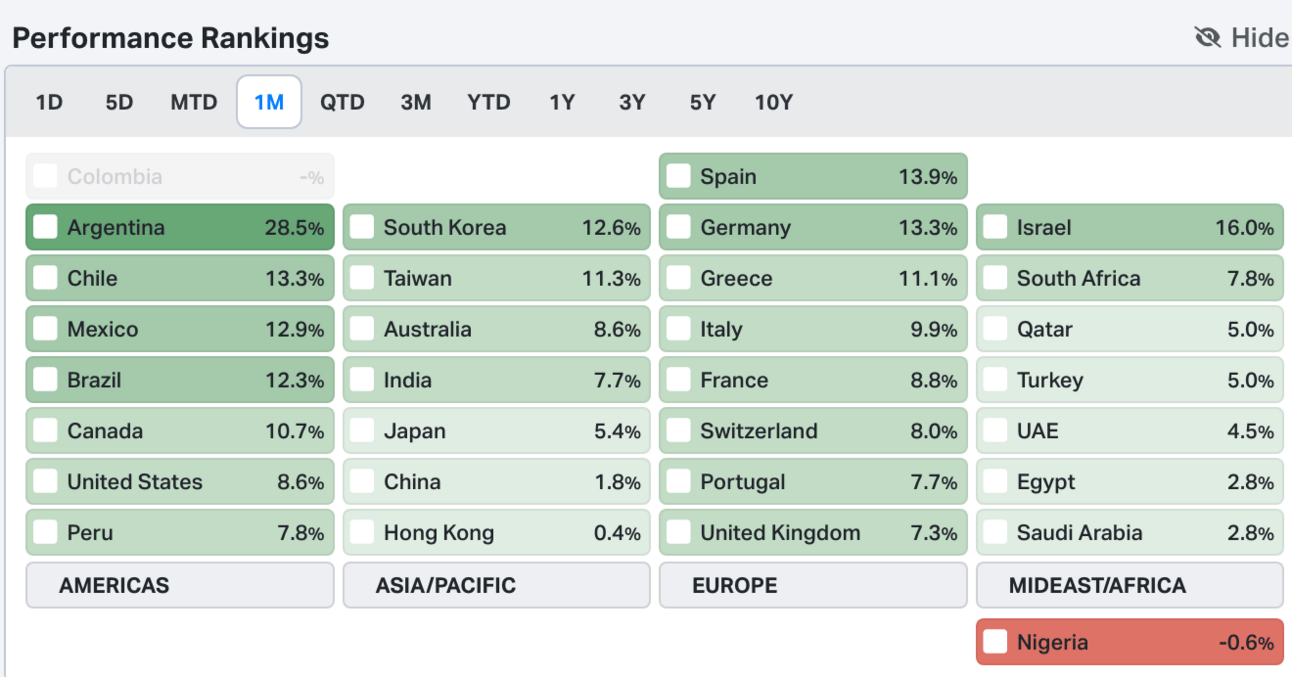
Source: Koyfin
US Treasury rates and the US dollar have remained subdued, allowing the markets to rally. Going into the end of the year we think the market chops in a range from here with all the data points ahead of us and the Fed meeting. It’s quite likely that we will see dips being bought and stretched positioning being sold, to keep the market within this range.

S&P 500 Index
Momentum is waning gradually and next week may be tougher ending with a relatively strong number on the unemployment report. Again, any weakness in the market resulting from that, may be bought.
Commodities

Source: Koyfin
A mixed week for commodities with energy taking a hit, while precious metals did well.
US Crude builds are not helping with the price of oil and the OPEC+ meeting didn’t bring any fresh round of cuts. They announced voluntary cuts of 2.2 million barrels per day, reallocated between several members. They have not published the final schedule but, if we are to take these cuts from the 2024 production levels set in June, we end up with roughly the same level of production quota that was there prior to this last meeting. So nothing has changed and the market sees this as a positive sign for supply.
Precious metals seem to be pricing in rate cuts and with lower expected real rates, we’re seeing quite the rally.
We saw base metals pick up slightly during the week on better-than-expected Chinese activity data. Whether this move is sustainable, remains to be seen.
Some of the charts in the recap section have been sponsored by Koyfin. We have a special discount of 15% for MacroVisor readers for any new sign-ups to Koyfin. To take advantage of this promo please sign up here - Koyfin MacroVisor Discount
Macro - The Labor Market Dilemma
With the October PCE report behind us, we have two important data points to consider before the last Fed meeting for the year and the final set of Fed projections. One of them is the unemployment report set to be released next Friday, Dec 08 and the other is the CPI report for November set to be released on Tuesday, Dec 12, the day before the FOMC rate decision.
A major reason that many analysts predict a lower chance of recession, is the low level of unemployment and the consumer spending impulse.
As far as the labor report is concerned, we are seeing some signs of balance being restored and easing of labor market indicators.
With the recent level of revisions done to the Nonfarm Payroll reports, the data suggests job creation has slowed considerably. Furthermore, we’re seeing a change in pattern in terms of employment. Much of the employment in the last couple of reports is being led by government hiring, which suggests that jobs are not being created at the pace that they were.

Nevertheless, job openings still remain unusually high and until we see that number decline to pre-pandemic levels, we’re likely going to continue to see spending in the economy, which pushes up GDP.
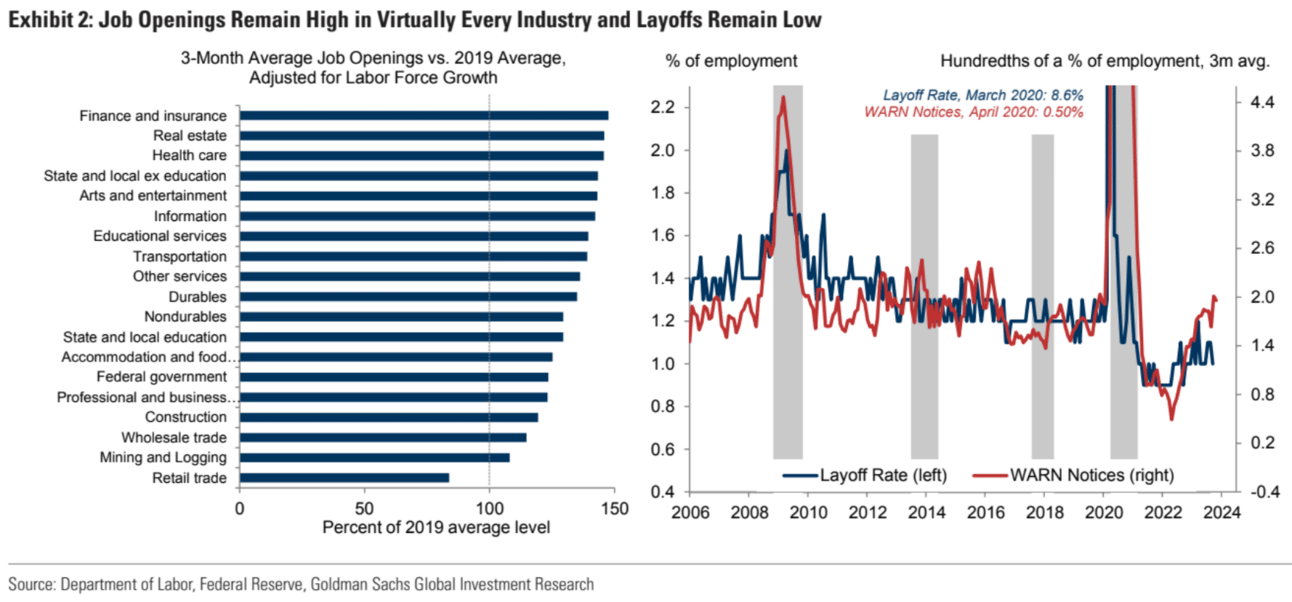
An important issue with the job data though, is that response rates have declined quite a lot. According to Goldman Sachs, the decrease in response rate has probably increased the median monthly standard error for the job openings rate by over 90% compared to the period from 2002 to 2013. Additionally, a reduced sample size may result in more significant revisions to previously released data, as each additional response has a heightened impact on revised calculations.

Finally, we have the issue of excess savings. It’s no secret that savings rates shot up during the pandemic and there was an accumulation of excess savings in the system. This is true not just for the US but, for most developed markets around the world. While savings have tapered off since then, the US, Australia, and Japan are the three countries that are below pre-pandemic levels.
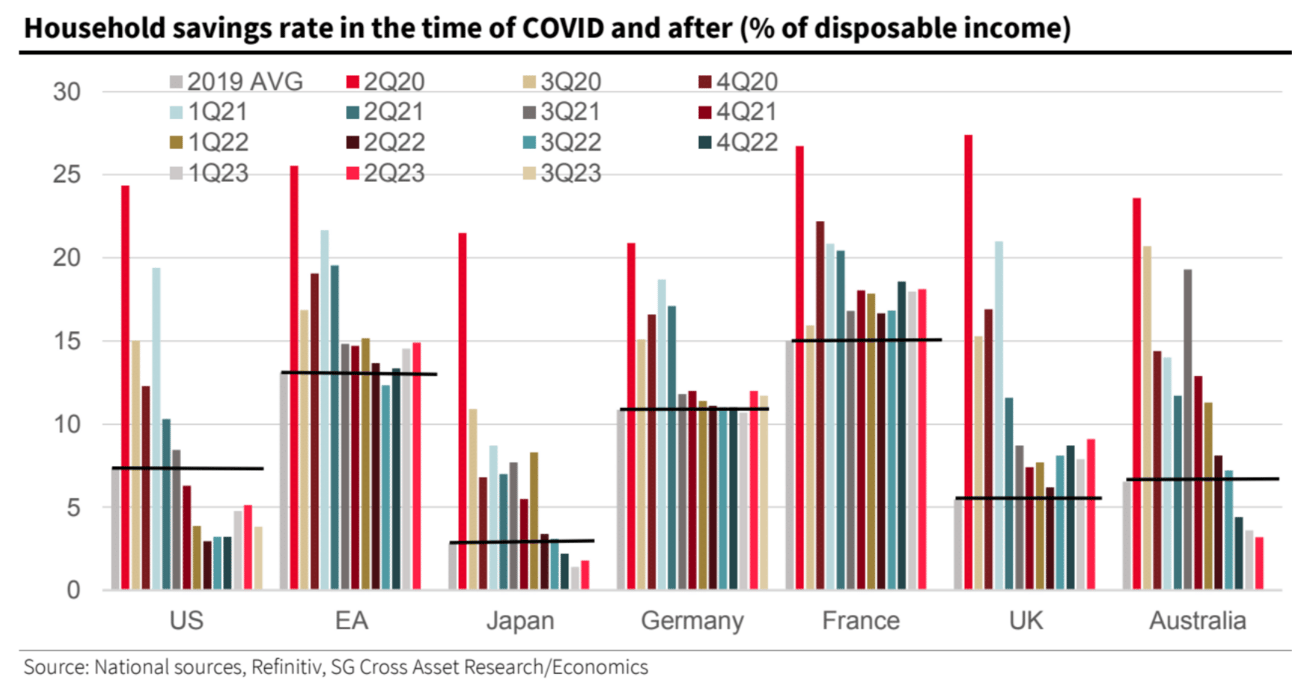
As for the US, excess savings are also being spent down and we’re seeing these levels now drop precipitously.
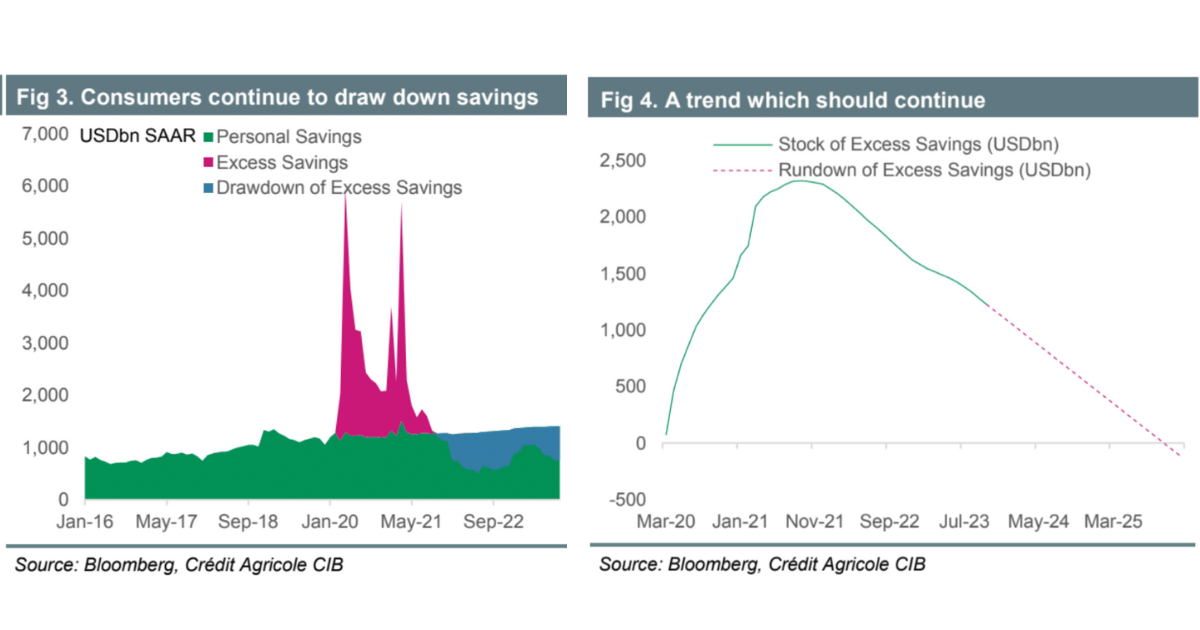
As for November’s data (to be released in Dec):
Analysts predict an addition of 175k nonfarm payrolls to the US economy in November, higher than October's 150k but below recent averages (204k for 3 months, 206k for 6 months, 243k for 12 months).
Unemployment rate is expected to stay at 3.9%, against the Federal Reserve's September projection of 3.8% for year-end and a forecasted increase to 4.1% in 2024.
November's job growth uptick is likely the impact of United Auto Workers strikes in October, not a labor market resurgence.
Analysts anticipate the October JOLTs data, expected on Tuesday before November's job data, to reflect a decrease in job openings as companies adjust hiring plans due to current economic conditions.
While the labor market is cooling, there remains residual tightness. A tight labor market could mean spending continues for a while longer but, eventually, that will lead to inflation in the absence of productivity growth.
While we’ve signs of improvement in productivity, much of that may be because of the changing dynamics of the job market and people worried about losing their jobs. We also have a surge in temporary employment and people having to take on multiple jobs because their primary job is cutting back on hours.
The one thing we do know, unemployment is usually strongest before a recession and when we do see a rise in unemployment, it can rise fast. With the level of job openings, this may not necessarily be the case but, we do foresee a slowdown in spending patterns.
The Week Ahead - Calendars
US Earnings Calendar

US Economic Calendar in Eastern Time (Source: Trading Economics)

Closing Thoughts - Keeping an eye on the data
Friday was the last we will hear from Fed members until the FOMC meeting, as we enter the FOMC blackout period. With financial conditions easing considerably during November, Fed Chair Powell likely had to lean hawkish and keep the door open for further tightening so the market doesn’t get complacent.
The market, however, has already decided that the Fed has paused and rate cuts are being priced in as soon as March 2023. With these premature rate cuts in view, the chances of getting an announcement from the Fed about a pause have probably declined. The Fed may continue to remain hawkish to maintain the effects of tightening policy.
We’re at a critical juncture in terms of inflation - between the 2% and 3% band - and this is exactly where the inflation could continue to remain sticky, particularly at the core level. In fact, we can’t discount the resurgence of inflation at this stage either and the CPI report released right before the Fed meeting, will be an important piece of data to determine that trend.
Here’s wishing you safe investing.
Sincerely yours,
Ayesha Tariq, CFA
There’s always a story behind the numbers.
Reply